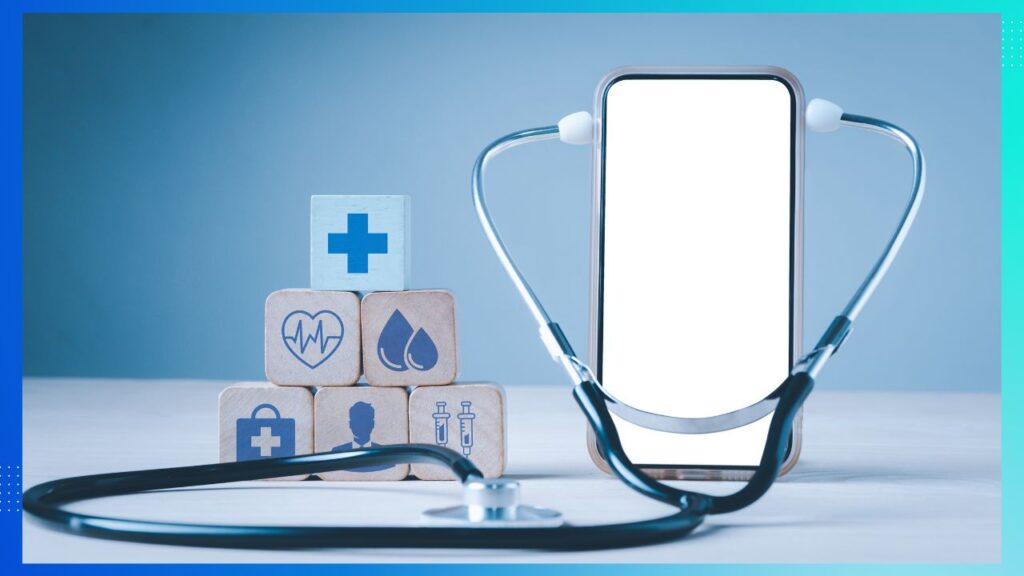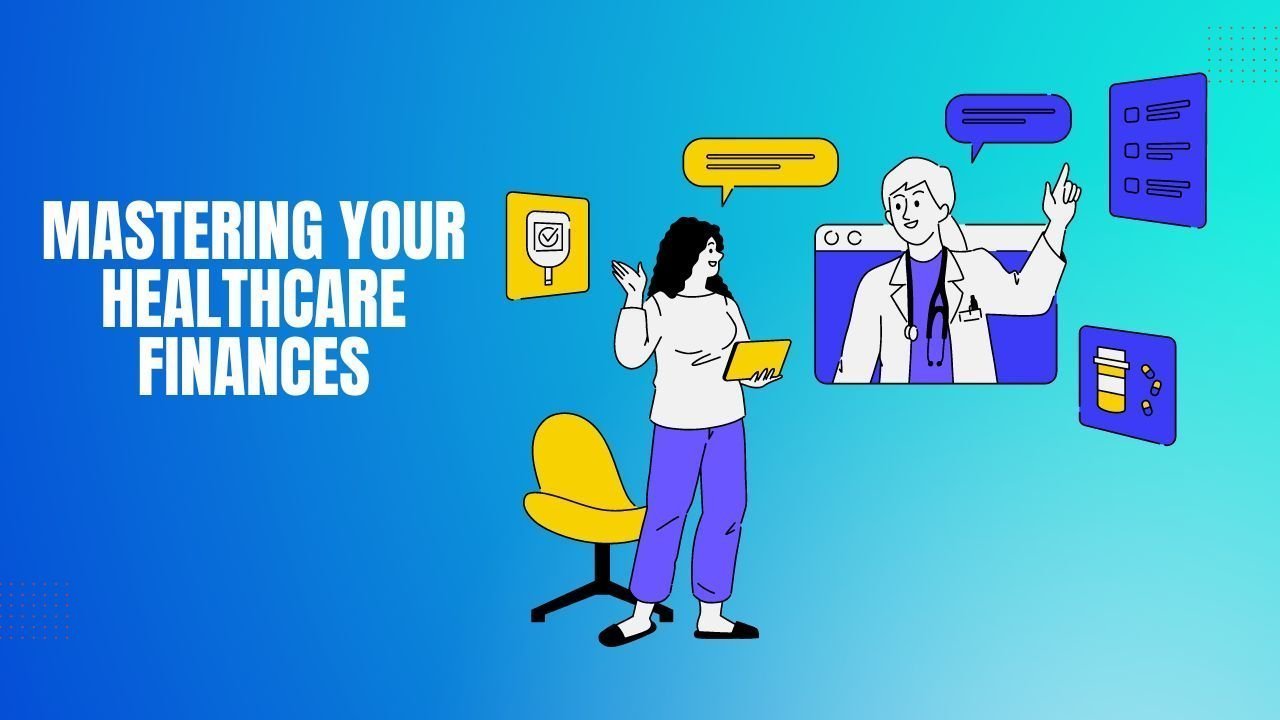Have you ever received a medical bill that made your heart skip a beat? If you’re nodding your head, you’re not alone.
According to a recent study, millennials are the age group most likely to skip out on medical care due to high costs.
And it’s no wonder why – healthcare expenses can quickly add up and become a financial burden, especially if you don’t have a plan in place.
But don’t worry, mastering your healthcare finances is possible!
Taking control of your health care expenses is an important aspect of personal finance for millennials.
By understanding health insurance, out-of-pocket costs, prescription drug prices, and more, you can save money and make informed decisions about your health care.
That’s why in this comprehensive guide, we’ll cover everything you need to know about mastering your healthcare finances as a millennial.
From creating a healthcare budget to taking advantage of financial assistance programs, we’ve got you covered.
So let’s dive in and take control of our healthcare finances together!
1. Health Insurance
When it comes to healthcare expenses, health insurance is often the first line of defense.
However, navigating the world of health insurance can be overwhelming, especially for millennials who may be new to the workforce and unfamiliar with the terminology.
1.1 The Basics of health insurance for Millennials
Health insurance is a type of insurance that helps cover the cost of medical care.
With health insurance, you pay a monthly premium to the insurance company, and in exchange, the insurance company covers some or all of your healthcare expenses.
Health insurance can cover a wide range of medical services, including doctor’s visits, hospital stays, prescription drugs, and more.

1.2 Understanding Health insurance terminology
Before choosing a health insurance plan, it’s important to understand some key health insurance terminology.
Here are a few terms you should be familiar with:
- Premium: The amount you pay each month to maintain your health insurance coverage.
- Deductible: The amount you must pay out-of-pocket before your insurance coverage kicks in.
- Copayment (Copay): A fixed amount you pay for a covered medical service, typically due at the time of service.
- Coinsurance: A percentage of the cost of a covered medical service that you must pay after you meet your deductible.
- Network: A group of doctors, hospitals, and other healthcare providers who are contracted with your insurance company to provide care to their members.
1.3 Different Types of health insurance plans
There are several different types of health insurance plans available, each with its benefits and drawbacks.
Here are a few of the most common types of health insurance plans:
- Health Maintenance Organization (HMO): HMOs typically have lower out-of-pocket costs, but you must choose a primary care physician and stay within the network of healthcare providers.
- Preferred Provider Organization (PPO): PPOs offer more flexibility when choosing healthcare providers, but usually come with higher premiums and out-of-pocket costs.
- Exclusive Provider Organization (EPO): EPOs are similar to PPOs, but with a smaller network of providers to choose from.
- High Deductible Health Plan (HDHP): HDHPs have lower monthly premiums, but you must pay a high deductible before insurance coverage kicks in.
- Catastrophic Health Insurance Plan: Catastrophic plans have low premiums, but only cover major medical events like hospital stays and emergencies.
1.4 How to choose the right health insurance plan
Choosing the right health insurance plan can be a daunting task, but there are a few key factors to consider.
Here are some tips for choosing the right health insurance plan:
- Consider your healthcare needs: Think about your healthcare needs and choose a plan that offers coverage for the services you’re likely to use.
- Look at the total cost of coverage: In addition to the monthly premium, consider the deductible, copays, and coinsurance when comparing plans.
- Check the provider network: Make sure the healthcare providers you want to see are in-network for the plan you’re considering.
- Look for extra perks: Some plans offer additional benefits like wellness programs or telehealth services, which could be valuable for you.
When comparing plans, it can be helpful to make a table to compare the costs and benefits of each plan side-by-side.
By doing your research and carefully considering your options, you can choose a health insurance plan that meets your healthcare needs and your budget.
2. Out-of-Pocket Costs
Even with health insurance, you’ll likely have some out-of-pocket costs when seeking medical care.
These costs can add up quickly, especially if you have a high deductible or need ongoing medical treatment.
Understanding your out-of-pocket costs and finding strategies to manage them can help you stay on top of your healthcare expenses.
2.1 Understanding out-of-pocket costs
Out-of-pocket costs refer to the expenses you must pay for medical care that are not covered by your insurance.
These costs can include deductibles, copays, coinsurance, and any expenses that exceed your plan’s coverage limits.
Out-of-pocket costs can vary widely depending on your insurance plan and the type of medical care you receive.

2.2 Co-pays, deductibles, and coinsurance
To effectively manage your out-of-pocket costs, it’s important to understand the different types of expenses you may encounter:
- Co-pays: A fixed amount you pay for a covered medical service, typically due at the time of service.
- Deductibles: The amount you must pay out-of-pocket before your insurance coverage kicks in. For example, if you have a $1,000 deductible and receive a medical bill for $2,000, you’ll be responsible for paying the first $1,000, and your insurance will cover the rest.
- Coinsurance: A percentage of the cost of a covered medical service that you must pay after you meet your deductible. For example, if you have a 20% coinsurance and receive a medical bill for $1,000 after meeting your deductible, you’ll be responsible for paying $200, and your insurance will cover the remaining $800.
2.3 Strategies for managing out-of-pocket costs
Managing out-of-pocket costs can be a challenge, but there are several strategies you can use to reduce your expenses:
- Take advantage of preventive care: Many insurance plans cover preventive care services like annual checkups and vaccinations at no cost to you. By staying on top of your preventive care, you can avoid more expensive medical treatments down the line.
- Shop around for care: Before receiving medical care, shop around for the best price. Different providers may charge vastly different prices for the same service, so it pays to do your research.
- Consider generic drugs: If you need prescription drugs, ask your doctor if there are generic alternatives available. Generic drugs are typically much cheaper than brand-name drugs and can save you a lot of money over time.
- Negotiate bills: If you receive a medical bill that you can’t afford, don’t be afraid to negotiate with your healthcare provider. Many providers are willing to work out payment plans or offer discounts to patients who are struggling to pay their bills.
- Consider a Health Savings Account (HSA): If you have a high-deductible health plan, you may be eligible for an HSA. An HSA allows you to save pre-tax dollars to use for qualified medical expenses. By contributing to an HSA, you can reduce your taxable income and save money on medical expenses.
By understanding your out-of-pocket costs and finding strategies to manage them, you can stay on top of your healthcare expenses and avoid financial surprises.
Remember to keep track of your medical expenses and budget accordingly, so you can plan for any out-of-pocket costs that may arise.
3. Prescription Drugs
Prescription drugs can be a significant expense for many people, especially those with chronic conditions that require ongoing treatment.
In recent years, the cost of prescription drugs has risen dramatically, putting a strain on many individuals’ budgets.
Fortunately, there are strategies you can use to reduce your prescription drug costs and save money.
3.1 The rising cost of prescription drugs
According to a report by the Kaiser Family Foundation, the average cost of a prescription drug in the United States increased by 58% between 2012 and 2017.
This rise in costs can be attributed to a variety of factors, including drug manufacturers’ pricing practices, the complexity of the healthcare system, and the high cost of research and development.

3.2 Strategies for reducing prescription drug costs
To reduce your prescription drug costs, consider the following strategies:
- Compare prices: The cost of prescription drugs can vary widely depending on where you purchase them. Consider shopping around at different pharmacies or using price comparison websites to find the best deals.
- Ask for generic drugs: Generic drugs are typically much cheaper than brand-name drugs and are just as effective. Ask your doctor if there is a generic version of your prescription available.
- Use prescription discount programs: Many pharmacies offer discount programs for prescription drugs. These programs can help you save money on your medications, especially if you don’t have insurance.
- Consider mail-order pharmacies: Mail-order pharmacies can be a cost-effective way to purchase prescription drugs, especially if you need a long-term supply of medication.
- Look for assistance programs: Many drug manufacturers offer assistance programs for patients who can’t afford their medications. These programs can provide discounts, coupons, or even free drugs to qualifying individuals.
3.3 Generic vs. brand name drugs
When it comes to prescription drugs, there is often a choice between brand-name and generic drugs.
Brand-name drugs are typically more expensive, but they are also backed by extensive research and development.
Generic drugs, on the other hand, are cheaper and just as effective as brand-name drugs.
If your doctor prescribes a brand-name drug, ask if there is a generic version available.
In many cases, the generic drug will be just as effective as the brand-name version, and it will be much cheaper.
Be sure to talk to your doctor or pharmacist before switching to a generic drug, as some drugs may have different formulations or dosages that could affect their effectiveness.
4. Preventive Care
Preventive care is an important aspect of maintaining good health and can also help you save money on healthcare expenses in the long run.
Preventive care refers to services such as check-ups, screenings, and vaccinations that are designed to detect and prevent potential health problems before they become serious.
4.1 The Importance of preventive care
Preventive care is essential for maintaining good health and can help identify potential health problems early on when they are easier and less expensive to treat.
According to the Centers for Disease Control and Prevention, preventive care can also help reduce the incidence of chronic diseases such as diabetes and heart disease.

4.2 Preventive care services covered by insurance
Many health insurance plans cover preventive care services, including:
- Annual wellness visits
- Blood pressure and cholesterol screenings
- Cancer screenings (such as mammograms and colonoscopies)
- Vaccinations (such as flu shots and HPV vaccines)
- Counseling services (such as tobacco cessation and weight management)
It’s important to check with your insurance provider to determine which preventive care services are covered under your plan and at what cost.
4.3 The financial benefits of preventive care
While preventive care services may require some out-of-pocket expenses, they can ultimately save you money in the long run by detecting and treating health problems early on.
According to a study by the Health Care Cost Institute, individuals who received preventive care services spent an average of $1,100 less on healthcare expenses compared to those who did not receive preventive care.
In addition to reducing healthcare costs, preventive care can also help you avoid missing work due to illness and improve your overall quality of life.
By taking steps to maintain your health and prevent potential health problems, you can keep your healthcare expenses under control and enjoy a healthier, more productive life.
5. Medical Debt
Medical debt can be a major financial burden for many individuals and families, and can even impact your credit score.
Understanding medical debt and how to manage it can help you avoid financial stress and ensure that your credit remains intact.
5.1 Understanding medical debt
Medical debt is debt that arises from healthcare expenses, such as hospital bills, doctor’s visits, and prescription medications.
Medical debt can be unexpected and can quickly add up, especially if you don’t have health insurance or if your insurance plan has high out-of-pocket costs.

5.2 How medical debt can impact your credit score
Medical debt can impact your credit score in a few different ways.
If you have unpaid medical bills that are sent to collections, this can negatively impact your credit score.
Additionally, even if you are making payments on your medical debt, the amount of debt you have can still impact your credit utilization ratio, which is a factor that can affect your credit score.
5.3 Strategies for managing medical debt
If you are struggling with medical debt, there are several strategies you can use to manage your debt and protect your credit score:
- Negotiate with healthcare providers: If you are facing large medical bills, try negotiating with your healthcare providers to see if they can offer you a discount or set up a payment plan.
- Review your medical bills: Make sure to review your medical bills carefully to ensure that you are not being overcharged or charged for services you did not receive.
- Consider financial assistance programs: Many hospitals and healthcare providers offer financial assistance programs for individuals who cannot afford to pay their medical bills.
- Use a medical credit card: Some healthcare providers offer medical credit cards that can be used to pay for medical expenses. These cards often come with low-interest rates and can help you spread out the cost of your medical bills over time.
- Consult with a financial advisor: If you are struggling with medical debt, consider consulting with a financial advisor to help you develop a plan for managing your debt and protecting your credit score.
In summary, medical debt can be a major financial burden, but there are strategies you can use to manage your debt and protect your credit score.
By negotiating with healthcare providers, reviewing your medical bills, and considering financial assistance programs, you can take steps to manage your medical debt and avoid financial stress.
6. Health Savings Accounts (HSAs)
Health Savings Accounts (HSAs) are tax-advantaged accounts that allow individuals to save money for eligible medical expenses.
Here are some important things to know about HSAs:
6.1 What is an HSA?
An HSA is a savings account that can be used to pay for qualified medical expenses, such as deductibles, copayments, and prescriptions.
The account is typically offered by employers, but individuals can also open their own HSA.

6.2 Eligibility for an HSA
To be eligible for an HSA, you must be enrolled in a high-deductible health plan (HDHP).
In 2022, the minimum deductible for an HDHP is $1,400 for an individual and $2,800 for a family.
Additionally, you cannot be enrolled in any other health coverage, such as Medicare or another health insurance plan that is not an HDHP.
6.3 Benefits of an HSA
One of the biggest benefits of an HSA is the tax advantages it offers.
Contributions to an HSA are tax-deductible, which means you can reduce your taxable income by the amount you contribute.
Additionally, any interest or investment earnings on the account are tax-free. Withdrawals for eligible medical expenses are also tax-free.
HSAs also offer the flexibility to use the funds for medical expenses that may not be covered by insurance.
This includes things like vision and dental care, over-the-counter medications, and even certain alternative therapies.
6.4 How to use an HSA to manage healthcare expenses
Using an HSA to manage healthcare expenses requires some planning and discipline.
Here are some tips to help you make the most of your HSA:
- Contribute regularly: To build up your HSA balance, it’s important to contribute regularly, ideally through payroll deductions if your employer offers them.
- Understand eligible expenses: Take the time to familiarize yourself with the types of expenses that are eligible for HSA reimbursement. Keep track of your receipts and other documentation to ensure you can easily access them when it’s time to file a claim.
- Invest wisely: Many HSAs offer investment options, which can help your savings grow over time. However, it’s important to understand the risks associated with investing and to make informed decisions based on your risk tolerance and investment goals.
- Shop around: Just like with any other type of insurance or health care service, it’s important to shop around for the best prices on medical services and prescriptions. You may be able to negotiate lower prices with providers or find more affordable options through online pharmacies or other channels.
Overall, HSAs can be a powerful tool for managing healthcare expenses and saving money on taxes.
If you’re eligible for an HSA, it’s worth considering how you can incorporate it into your overall financial plan.
7. Wellness Programs
Many employers offer wellness programs to their employees as a way to encourage healthy behaviors and reduce healthcare costs.
These programs may include health screenings, fitness challenges, smoking cessation programs, and nutrition education, among other things.
7.1 Employer-Sponsored Wellness Programs
Employer-sponsored wellness programs can be a valuable resource for employees, as they provide access to health and wellness services that may otherwise be difficult to afford or access.
These programs can also provide a sense of community and support, as employees work together to achieve common health goals.

7.2 Financial Benefits of Wellness Programs
In addition to the health benefits of participating in a wellness program, there may also be financial benefits.
Many employers offer incentives for participating in these programs, such as reduced health insurance premiums or bonuses for meeting certain health goals.
These incentives can help offset the cost of health care and encourage employees to take an active role in managing their health.
Overall, wellness programs can be an effective way for millennials to manage their healthcare expenses and improve their overall health and well-being.
If your employer offers a wellness program, it may be worth exploring the options and taking advantage of the resources available to you.
8. Telehealth
The COVID-19 pandemic has accelerated the adoption of telehealth or telemedicine services in the healthcare industry.
Telehealth is the use of technology to provide remote healthcare services such as virtual consultations, remote monitoring, and digital prescriptions.
8.1 What is telehealth?
Telehealth is the provision of healthcare services through the use of telecommunication and digital technologies.
It includes virtual consultations with healthcare providers, remote monitoring of vital signs, and digital prescriptions.
Telehealth is a convenient and cost-effective alternative to traditional in-person healthcare services, and it is gaining popularity among millennials.

8.2 Benefits of Telehealth
There are numerous benefits of telehealth, including:
- Convenience: Telehealth services eliminate the need for physical visits to healthcare providers, saving you time and money. You can access healthcare services from the comfort of your own home, office, or anywhere with an internet connection.
- Cost-effective: Telehealth services are often more affordable than in-person healthcare services. Telehealth consultations typically cost less than office visits, and there are no transportation or parking costs associated with telehealth services.
- Improved access to healthcare: Telehealth services can increase access to healthcare for people living in rural or remote areas where healthcare providers are scarce. It can also be a great option for people with disabilities or limited mobility who find it difficult to travel to a healthcare facility.
- Better health outcomes: Telehealth services can lead to better health outcomes by enabling early detection and treatment of health issues. Remote monitoring of vital signs can detect changes in health status, and virtual consultations can provide prompt medical advice and treatment.
8.3 How to use Telehealth to save money on healthcare expenses
Telehealth services can help you save money on healthcare expenses in the following ways:
- Lower consultation fees: Telehealth consultations are often cheaper than in-person consultations. Some telehealth providers offer subscription-based plans that allow you to access unlimited consultations for a flat fee.
- Reduced transportation costs: Telehealth services eliminate the need for transportation to and from healthcare facilities, saving you money on gas, parking, and other transportation-related expenses.
- Timely medical care: Telehealth services can provide prompt medical care, preventing minor health issues from turning into major health problems. This can save you money on healthcare expenses in the long run.
- Affordable prescriptions: Some telehealth providers offer digital prescriptions that can be filled at a lower cost than traditional prescriptions. This can save you money on medication expenses.
In conclusion, telehealth is a cost-effective and convenient way to access healthcare services.
It can help you save money on healthcare expenses by reducing consultation fees, eliminating transportation costs, and providing timely medical care.
As the healthcare industry continues to embrace digital technologies, telehealth is likely to become even more popular among millennials.
9. Financial Assistance Programs
Financial assistance programs can be a great resource for those struggling to manage their healthcare expenses.
There are various government programs, non-profit organizations, and charities that provide financial assistance to individuals who are unable to pay their medical bills.
In this section, we will discuss the different types of financial assistance programs available and their eligibility requirements.
9.1 Government programs
9.1.1 Medicaid
Medicaid is a government-funded program that provides healthcare coverage to low-income individuals and families.
Eligibility requirements vary by state, but generally, individuals must meet income and asset limits to qualify.
Medicaid covers a wide range of healthcare services, including doctor visits, hospitalizations, and prescription drugs.
9.1.2 medicare
Medicare is a federal program that provides health insurance for people who are 65 or older, certain younger people with disabilities, and people with End-Stage Renal Disease.
Different parts of Medicare cover different services, such as hospitalizations, doctor visits, and prescription drugs.

9.2 Non-profit organizations and charities
9.2.1 The Patient Access Network Foundation
The Patient Access Network Foundation provides financial assistance to individuals with chronic or life-threatening illnesses.
They provide co-payment assistance for medications and treatments, transportation to and from medical appointments, and other support services.
9.2.2 The Assistance Fund
The Assistance Fund provides financial assistance to individuals with chronic or serious illnesses who are unable to afford their medical treatments.
They provide co-payment assistance for medications and treatments, health insurance premiums, and travel expenses to and from medical appointments.
9.3 Eligibility Requirements and application processes:
Eligibility requirements vary by program and may depend on factors such as income, family size, and medical condition.
It’s important to research each program’s eligibility requirements before applying.
Application processes also vary by program but generally require individuals to provide proof of income and medical bills.
Some programs may also require a letter from a healthcare provider.
Financial assistance programs can provide significant relief to individuals struggling to manage their healthcare expenses.
If you’re having trouble paying medical bills, consider exploring these programs and their eligibility requirements to see if you qualify.
10. Budgeting for Health Care Expenses
Creating a budget for healthcare expenses is an essential part of overall financial planning, especially for millennials who may be just starting to navigate their healthcare needs.
Budgeting for health care can help you manage your expenses and prevent unexpected costs from derailing your financial goals.

Here are some tips to help you budget for your healthcare expenses:
- Assess your current health care needs: The first step in creating a health care budget is to assess your current health care needs. Take stock of any ongoing health conditions, any medications you take regularly, and any upcoming medical procedures you anticipate. This will help you get a sense of your annual healthcare costs and anticipate any out-of-pocket expenses you may incur.
- Review your health insurance coverage: Review your health insurance policy and understand what services and treatments are covered under your plan. Be sure to pay attention to deductibles, copays, and out-of-pocket maximums, as these will all impact your costs. Also, be aware of any exclusions or limitations in your policy.
- Create a dedicated healthcare savings account: Consider opening a dedicated health savings account (HSA) or flexible spending account (FSA) to help you save for healthcare expenses. These accounts allow you to save pre-tax dollars and can help you cover out-of-pocket costs. An HSA is only available to individuals with high deductible health plans, but an FSA can be available through your employer.
- Estimate your annual health care costs: Use your current health care needs and health insurance coverage to estimate your annual health care costs. Be sure to include costs for co-pays, deductibles, out-of-pocket maximums, and any other anticipated expenses. You can use online tools or your health insurance provider’s cost calculator to estimate these costs.
- Make adjustments to your budget: Once you have estimated your annual healthcare costs, adjust your budget accordingly. Make sure you are allocating enough money to cover your health care expenses, and make sure to account for any potential changes in your health care needs or coverage.
- Look for ways to save money: There are many ways to save money on health care expenses. Consider using telehealth services, which can be less expensive than in-person appointments, and always ask your doctor if there are generic alternatives to any medications you are prescribed. You can also shop around for medical services and compare prices to ensure you are getting the best deal.
Bottom Line…
I hope this guide has been informative and has helped you gain a better understanding of how to manage your healthcare expenses.
As we’ve seen, healthcare expenses can be a significant burden, with rising costs and increasing medical debt.
However, with the right knowledge and strategies, you can take control of your healthcare finances and ensure that you receive the care you need without breaking the bank.
Remember to explore all of your options when it comes to health insurance, prescription drugs, and financial assistance programs.
Utilize telehealth services and preventive care to save money in the long run, and always include healthcare expenses in your overall budgeting and financial planning.
By taking these steps, you can master your healthcare finances and achieve financial wellness.
With the right tools and resources at your disposal, you can achieve your financial goals and live a healthy, happy life.

4 thoughts on “Mastering Your Healthcare Finances: A Comprehensive Guide for Millennials”